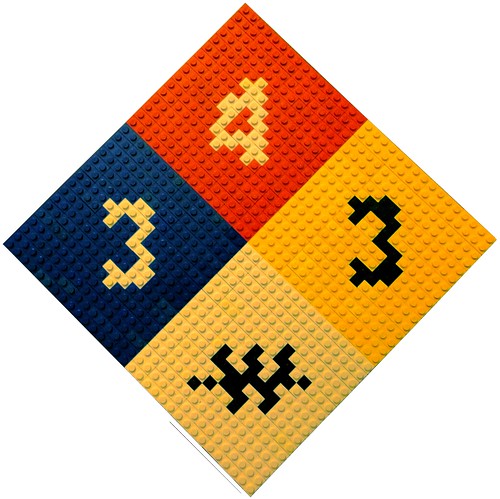
This symbol is found on individual chemical containers, and also on the doors to rooms containing these chemicals. The blue box indicates health hazards ranging from 0 (no hazard, no precautions needed) to 4 (potential to cause serious harm or death upon short exposure). The red box is for flammability, from 0 (inflammable) to 4 (forms an extremely flammable vapor at normal pressure and temperature). The yellow box notes reactivity, again ranging from 0 (completely stable) to 4 (capable of detonation or explosive decomposition). The white box is reserved for special hazards. The NFPA standard only recognizes OX for oxidizing agents, and a W with a slash for those substances that react with water. Informally, people often add other hazards to this box, such as the symbol for radioactivity, or the word ACID, etc. One thing to note, you have to include the highest level hazard on the sign, so if you saw the NFPA label below on the door to my lab, it tells you that there is at least one substance in the room with a health hazard of 3, another substance that has the flammability of 4, perhaps still another with a reactivity of 3, and something else that reacts with water, not necessarily any one chemical with all of those properties. The idea is that someone entering the room (particularly an emergency responder) would know what possible hazards are there and what protective gear they need to wear.
No comments:
Post a Comment